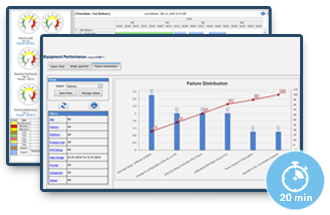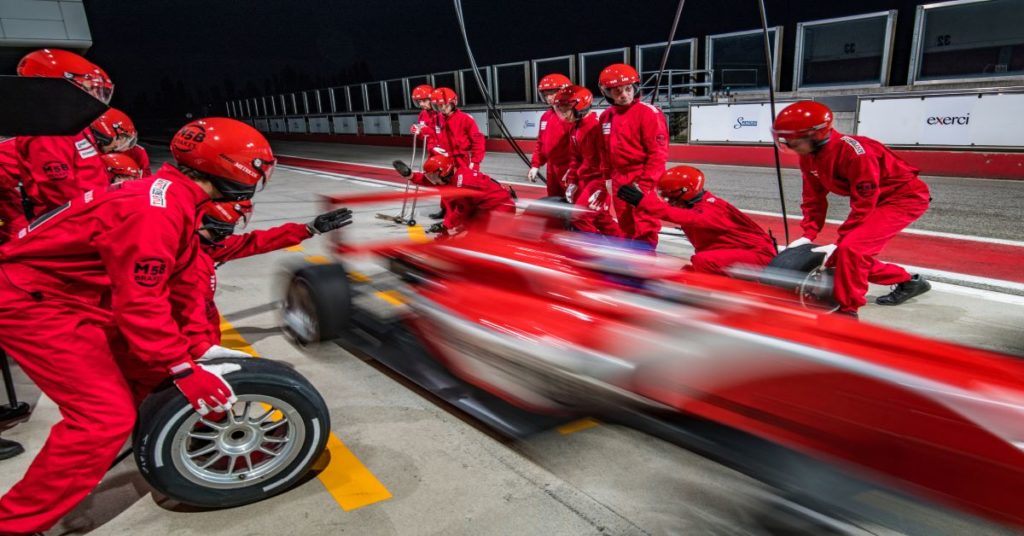

Unless you plan to produce great results, you don’t have a chance at producing them. They don’t happen by accident. The outcomes you aim at will specify what kinds of tools you will need and how you will need to use those tools. The same tools can be used by two different people or people on two different teams with vastly different outcomes. Why? It could be the software training and tools haven’t been designed to produce the outcomes in question. Our Accelerated Enterprise Asset Management has been designed for speed and efficiency. The focus of this blog post is training users to be able to use the software to produce competitive outcomes like improved time-to-market and costs.
Marketplace Standards for Asset Management Implementation are Weak and Uncompetitive.
Standards are weak because teams are often not sure what success looks like with the software they’ve purchased. They aim too low. With transformations taking place in our businesses it seems asset management needs to catch up. How can we tell we are competitive with our asset management solutions? Results. Only results.
- Time to market improvements: 25% to 35%
- Asset Cost Savings: 50%
- Satisfied equipment users
Unless asset management teams are enabling results like this, they are no longer competitive and they are not helping their company to transform. Asset management should be a foundation for transformation, after all, assets are everywhere, used in every department, and essential for all critical enterprise processes.
It’s Time to Get Real!
Past success is no indicator of future success. We all need to be checking our thinking because the solutions that used to work are no longer sufficient in today’s drastically different competitive landscape.
When Sente began in the asset management game 20 years ago most companies were satisfied tracking their assets, avoiding write-offs and audit findings, decreasing downtime. While we weren’t satisfied producing simply that, most companies were. We partnered with the ones that weren’t. Today’s competitive situation means companies need to get more from their assets and their people and do it fast! Today’s competitive standards obsolete traditional asset management standards and require new capabilities for speed, efficiency and innovation.
New Competitive Standards Demand a Different Approach
Today, competitive advantage goes to those who beat their competition with a steady stream of new and unique products and services that their competition can’t match. This means they have to manage their highly complex work environment to be agile and responsive and ensure their human capital and capital equipment is laser-focused on the mission, not distracted managing support functions, searching for equipment, or getting the right tools. For asset-intensive businesses the cost of not managing this well is especially high.
Asset Management Must Become a Team Sport
Economists say equipment and facilities aren’t assets unless they are making money. Competitive standards are driving all parts of today’s enterprise to change and asset management is no exception. When enterprises are tasked with producing products twice as fast, the importance of collaboration and coordination between departments is critical. Since asset returns are driven by individuals and teams developing and producing products using those assets, the solution needs to be aimed at helping the users. Just like a racecar driver needs a pit crew to keep their car running, they also need capability in the car and strategies with their race team to win the race. Asset management is no different. The focus must change from simply controlling and maintaining assets to a much bigger focus.
Focuses and Benefits of the Team Approach
When moving from a “control and compliance” mindset focused on “assets” to a “speed & agility” mindset focused on “people using assets” the approach must necessarily change. The “team approach” includes not only the current people “managing” the assets, but also the users of the assets, their management, suppliers of the assets and services associated with them (maintenance, calibration, etc.), purchasing, finance, and quality. Practices must be tailored to be useful to each of the team members in this new paradigm. Asset management can’t be disconnected activity they are doing, and it’s not “team for team’s sake”. Every person has an important role to play and they have to see how their efforts contribute directly, both positively and negatively, to speed and cost-effectiveness. Team members must be focused on building trust and satisfying each other.
The benefits of this approach are significant: 2X to 4X increases to utilization, 2X increases to speed, 40 to 60% reduction in equipment obsolescence risk across an inventory of equipment half the cost. Increased speed, reduced risk, and lower cost. Win. Win. Win.
Implications of the Team Approach to Training, Implementation and Team Skills
With a larger focus on building trust and satisfaction between teammates, training must include this as a focus. It starts with making sure each member first understands the implications of fulfilling their role in the success of the team and the company. One way trust is built and maintained is through transparency and clear communications and ultimately through keeping commitments. While a number of commitments remain the same, there are additional commitments that enable trust to build. As trust builds and the asset management system is fully adopted many historical problems, like data accuracy, go away. Speed and competitiveness accelerate as everyone on the team make better decisions with accurate data and robust workflows enabling better coordination among team members.
Examples of services offered by Sente in support of this approach are shown on our Tactical Services page and our Strategic Services page. We’ve won many customer and industry awards for our various services.
Asset Management Software Must Support the Team Approach
The standard today is that most departments have their own software tool, spreadsheet, or whiteboard and none of them are integrated to help facilitate cross-functional processes or data sharing. They must enable the speed of their customers’ new product development process. Sente’s software suite, named Scireo, includes the Latin root “sci” which means to “know.” Scireo contains knowledge that will help your teams to win in asset-intensive operations.
CONNECT: Scireo CONNECTS your team members with integrated workflows that bring transparency to equipment users, their customers, and support functions enabling them all to coordinate, cooperate, and share more quickly and easily.
POWER: Scireo POWERS your teams with contextual data and knowledge embedded in those workflows enabling teams to make better, faster, and more trustworthy decisions.
ACCELERATE: Scireo ACCELERATES their performance with algorithms that reduce organizational friction and drag in the workflows caused by costly and destructive behaviors.
Request a Demo

See how Scireo aEAM Software drops asset and support costs by 50% while accelerating time-to-market 2X.
Relevant Content
Designing and Executing a Plan is a Team Sport
Plans are only as good as your ability to execute them. Equipment plans or budgets are more than lists of equipment, they help fulfill intentions in a larger plan to bring products to market faster and increase margins, profitability, and growth. When plans are not designed and executed with these intentions in mind they can’t…
Asset Management 5.0: Designed for Speed & Competitiveness
Accelerated Enterprise Asset Management (aEAM) is an award-winning software and services suite used by companies with complex, asset-intensive operations and demanding competitive requirements for better than incremental improvements to speed, agility, and cost-effectiveness. The same old solutions won’t work. This is where Scireo aEAM comes in oto help transform your business. The Results with Asset…
Case Study: Aerospace Company Drives One Company Synergies
Like many aerospace companies, this one had many sites and different legacy cultures on each. See how they installed common resource management tools, increased utilization 3X and funded new programs.
Equipment Utilization Case Study: Space Company Leverages Assets
The hoarding culture was slowing this company down while impacting cost and quality. See how a journey to common processes and collaboration lead to a 50% reduction in assets as their business doubled.
Notable Quotes
“The team contributions that your process facilitated from engineering, operations, and finance was essential to our success.”
Sr Director, Space and Communications








